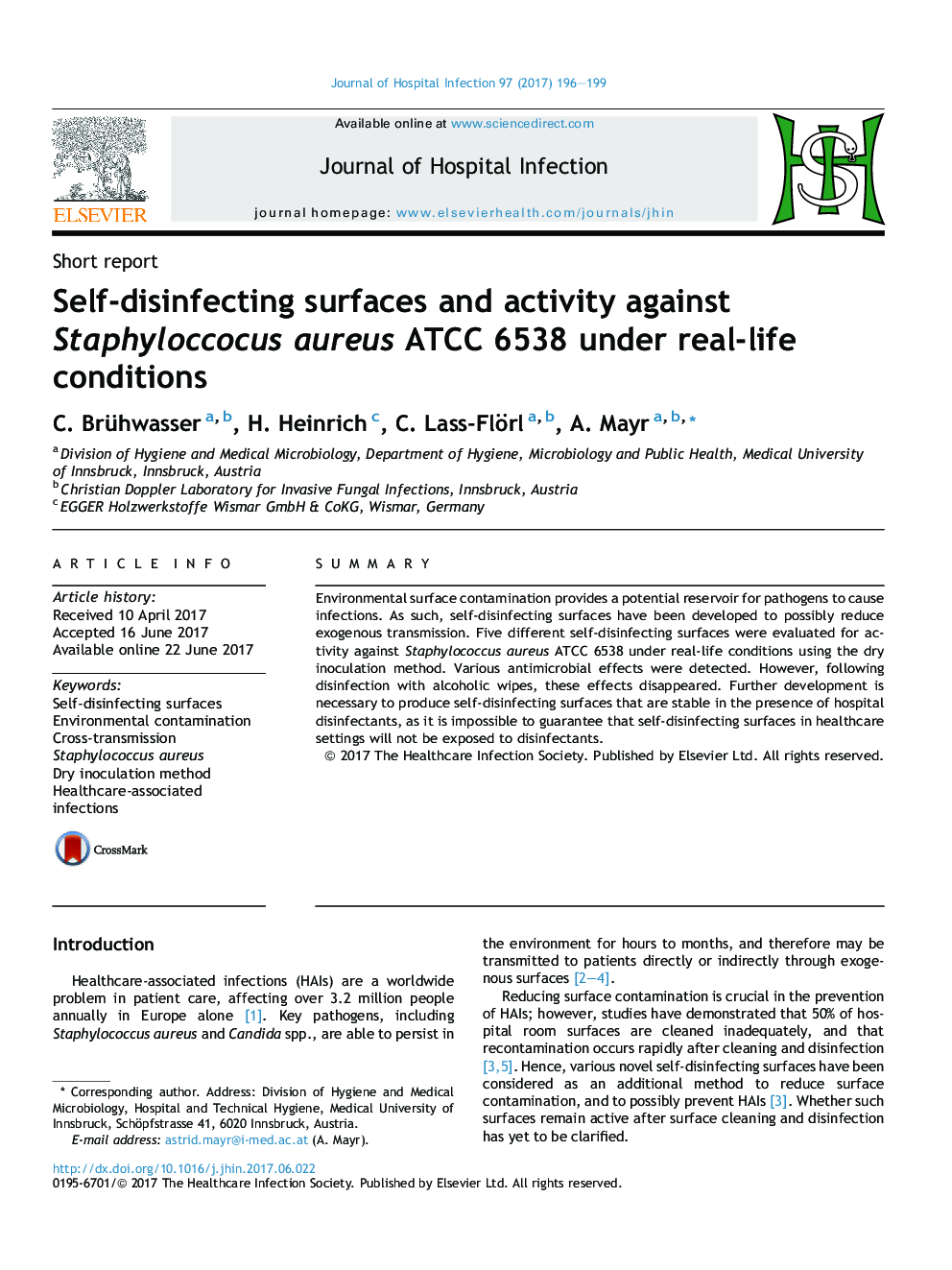| Article ID | Journal | Published Year | Pages | File Type |
|---|---|---|---|---|
| 5668252 | Journal of Hospital Infection | 2017 | 4 Pages |
SummaryEnvironmental surface contamination provides a potential reservoir for pathogens to cause infections. As such, self-disinfecting surfaces have been developed to possibly reduce exogenous transmission. Five different self-disinfecting surfaces were evaluated for activity against Staphylococcus aureus ATCC 6538 under real-life conditions using the dry inoculation method. Various antimicrobial effects were detected. However, following disinfection with alcoholic wipes, these effects disappeared. Further development is necessary to produce self-disinfecting surfaces that are stable in the presence of hospital disinfectants, as it is impossible to guarantee that self-disinfecting surfaces in healthcare settings will not be exposed to disinfectants.
